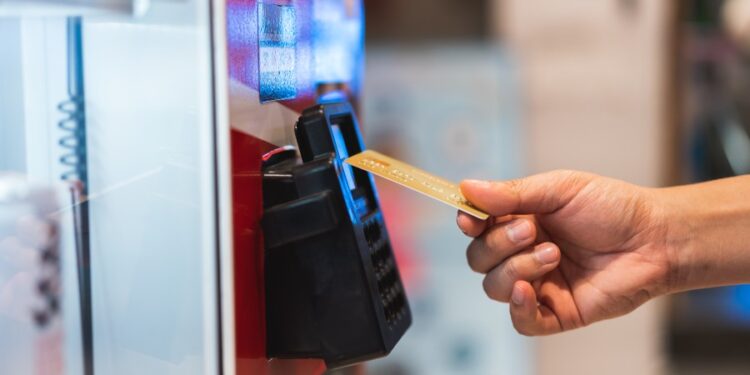(NewsNation) — More Americans are picking up side hustles, and vending machines are being touted on social media as a simple way to generate “passive” income.
How-to videos on TikTok and YouTube show vending entrepreneurs unloading bricks of cash. The short, punchy clips have racked up millions of views and explain how others can turn “snacks into stacks” with little effort.
With roughly 3 million vending machines across the U.S., the sector is worth an estimated $18.2 billion, according to the NAMA Foundation’s 2022-2023 industry census report.
So, how hard is it to get in on the action?
Claim: Vending machines are a simple, lucrative side hustle
Vending how-tos on TikTok and YouTube have clicky, eye-catching titles that give the impression business is booming:
- “He turned vending machines into a $500k business” (TikTok)
- “6 months in vending business and already made $10k” (TikTok)
- “2-Day Workweek Earns $700K – Vending Machine Business” (YouTube)

One YouTube short with over 58 million views claims to show the start-up process from start to finish. The user says he bought five used vending machines for $4,000, loaded them up with inventory from Costco and then profited $750 per month for two hours of work.
How the vending machine side hustle works
Social media makes getting started look easy: buy a machine, put it somewhere with foot traffic, stock it with stuff people want and swing by occasionally to collect your cash.
The videos follow a similar pattern. Vending entrepreneurs unlock their machines, pull out the cash and see which snacks or drinks are running low. From there, influencers head to big box stores like Costco or Sam’s Club to replenish their machines.
Viewers get the sense that there’s little time and energy involved.
What they’re not telling you about vending machines
The location of the vending machines is everything
“The biggest difficulty is finding a good location and negotiating with the owner,” said Brandon Schlichter, who has two dozen vending machines across central Ohio.
Schlichter estimates his machines bring in $3,000 to $3,500 a month — about $100 to $150 each. After factoring in costs like inventory and electricity, he said he makes around $2,000 in profit across all 24 units.
“It’s a nice little side piece of income. I’ve done well with it,” said Schlichter, a serial entrepreneur who shares business tips with nearly 2 million subscribers on his YouTube channel “Investment Joy.”
Schlichter’s machines are spread across laundromats, car washes and rental properties.
Negotiating is also important
Foot traffic is one factor to consider, but negotiating favorable terms with a building owner is just as important.

There is no standard playbook. Some landlords charge rent to host a machine, while others may ask for a commission.
“If you’re a good salesperson, you can get a location for free,” Schlichter said. “It’s a sales pitch to a business owner to get more foot traffic.”
Manufacturing plants were the most popular location in 2023, making up 40% of the vending machine market, according to Automatic Merchandiser’s State of the Industry report. Offices were the second most common location at 21.5%, followed by colleges and universities at 9.2%.
John Talbott, a senior lecturer focusing on retail at Indiana University, recommends scouting out locations and talking with potential landlords before buying a machine.
“Before I would invest, I’d walk around and I’d have 20 deals cut with somebody that said, ‘Yeah, you can bring one in,’” he said.
Choose the right product for the vending machine
Once you have a location, you’ll have to decide what to put in it.
One common mistake is stocking your machine based on what you like, which can be a “recipe for disaster,” Schlichter said.
“I’ve run into people that went and bought thousands of dollars worth of product for a vending machine, thinking that they could convert a factory to healthy foods, and then everything expired,” he said.
Cold beverage machines are the most common and accounted for 27% of vending sales last year, the most of any category, according to Automatic Merchandiser’s report. Snacks were the second-largest product category (17%) by revenue, followed by candy (14%).

As far as inventory, small operators often buy in bulk at stores like Costco and Sam’s Club.
“I know people that are in high volume, high traffic locations, and they’re taking that 25-cent bag of chips, and they’re reselling it for $1.50,” Schlichter said.
A final point: scale matters. The more machines you have, the more money you’ll make.
“You’re not going to really make a lot of money off one machine,” Talbott said.
Big picture: How many people are buying vending machines?
Vending machines have a relatively low barrier to entry, which makes them competitive.
Schlichter said used machines can cost anywhere from $500 to $2,000 on eBay and Facebook Marketplace. New machines are more expensive, costing about $3,500 to $6,800 at Sam’s Club.
Small-time operators may be less common than social media makes it seem. The NAMA Foundation found that the “typical” operator maintains 277 machines.
NAMA estimates the typical operator generates around $6,000 in revenue per machine annually, about $500 a month.
At the end of the day, Schlichter sees vending machines as a low-risk endeavor that, like any other business, requires hard work and practice.
“The only way that you learn is to go out and do it,” he said.







